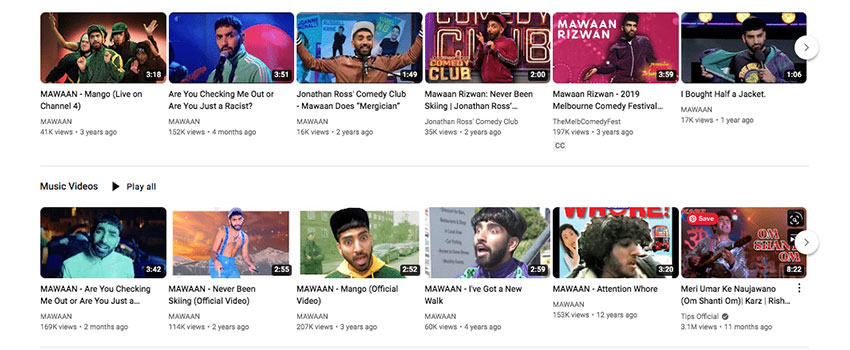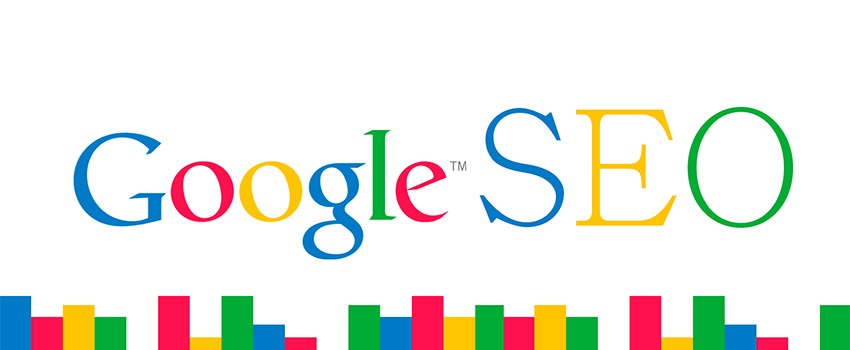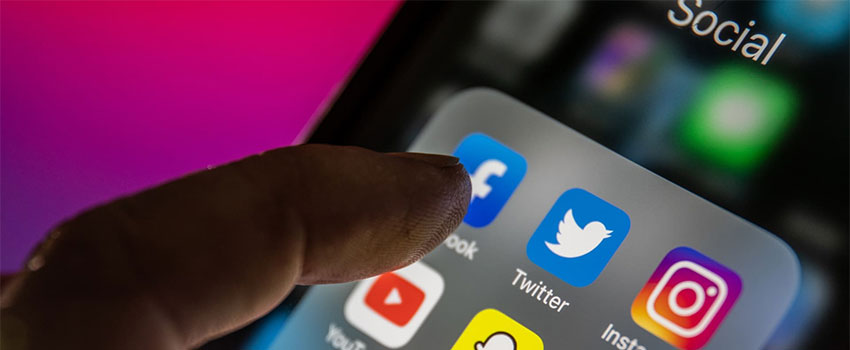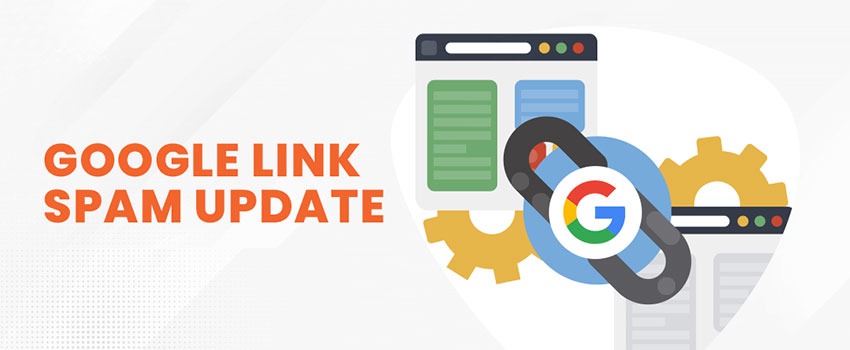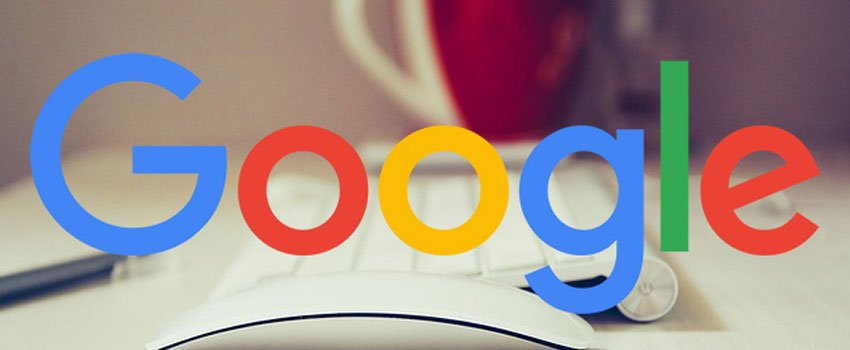16 YouTube Features You Need to Know
Discussions about today’s most popular social sharing websites focus mainly on Facebook and Twitter, leaving out YouTube. That gives the impression that YouTube may not be as significant, creating much impact as FaceBook and Twitter. That is not the reality. YouTube has a lot going for it. Although Facebook might be the largest social networking site, YouTube has the second-greatest reach after Facebook in terms of general usage. It’s also the second biggest search engine behind its parent company, Google.
Further reading:
- Email Marketing and the Trouble With Auto-Responders
- Tested Tips To Increase Joomla Website Loading Speed
- Manage Website Sudden Disappearance from Google SERPs
- How to Fix Website Bounce Rate Problems
- An SEO Guide on the Top 3 Success Factors For Every Website
There are lots of things you can do with YouTube that you might not know about, whether you use YouTube to watch videos, post them, or both. For example, did you know that YouTube automatically creates a written transcript for your videos — and that polishing them can help you get your videos found more easily in web searches? Or that you can use YouTube to easily create a photo slideshow, and even set it to music using its royalty-free audio library?
To help you make the most out of YouTube, we’ve put together a list of 16 of the lesser-known hacks, tips, and features YouTube has to offer.
1) You can create a link that starts a YouTube video at a certain time.
Ever wanted to send someone a YouTube video, but point them to a specific moment?
Instead of sending your friends the general YouTube link and instructing them to fast-forward to the 0:50 minute mark, you can actually send them a specific link that starts the video at whatever time you choose.
Alright, here’s how to do it.
To create a link that starts a YouTube video at a certain time: Open up the video and click Share underneath the video title. Then, under the first tab (also labeled), check the box next to Start at: and type in the time (in hours:minutes: seconds) you want. Alternatively, you can pause the video at the time you want it to start and that field will autofill.
After a few moments, you’ll see a tag add itself to the end of the generic YouTube link (something like, ?t=50s). Simply copy that link and paste it wherever you’d like.
It’s worth noting that you can’t embed a video so it starts at a certain time; you can only link to it.
2) You can easily see the written transcripts of people’s videos.
Did you know that YouTube automatically generates a written transcript for every single video uploaded to its website? That’s right — and anyone has access to that transcript unless the user manually hides it from viewers.
I can think of a number of different situations where video transcripts can come in handy. For example, maybe you want to write down a quote from a video, but the tedium of pausing-and-typing, pausing-and-typing would drive you up a wall. Or perhaps you need to find a specific section of a video but don’t want to rewatch the whole thing to find it. With a transcript in hand, you can find information like this without doing it all by hand.
To see a video’s transcript: Open the video on YouTube and press the More tab underneath the video title. Choose Transcript from the drop-down menu.
(If you aren’t seeing this option, it’s because the user chose to hide the transcript.)
The transcript will appear as a new module in the same window. In many cases, the user who uploaded the video will not have gone back and manually polished the transcript, so it won’t be perfect. But it’ll certainly save you some time and pain.
3) You can help your video get found in search by editing or uploading a transcript.
Both YouTube and its parent company Google look at a number of factors when ranking videos in search to determine what your video is about, and your transcript is one of them. (An even bigger ranking factor is your video’s description, which is why Digital Marketing Consultant Ryan Stewart suggests that you actually paste your transcript right into the description box, too.)
To add a transcript to your video: Open the video on YouTube, and you’ll see a row of icons just below the play button. Click the icon on the far right for Subtitles/CC. (CC stands for Closed Captions.)
Set your language if you haven’t already. Then, you’ll be prompted to choose among three different ways to add subtitles or closed captions to your video by:
Uploading a pre-written text transcript or timed subtitles.
Pasting in a full transcript of the video, wherein subtitle timings will be set automatically.
Typing them in as you watch the video.
The folks at YouTube have done some great things to make that third option (typing as you watch) as painless as possible. For example, if you check a box next to “Pause video” while typing, it’ll make the whole process a lot faster.
4) You can use YouTube to easily get free transcriptions of your videos and audio files.
As you know from #2, YouTube automatically adds a transcript to every video. But if you’re looking for a one-off transcription of an audio or video file and don’t want to pay for a service, YouTube’s built-in captioning system isn’t a bad place to start. You can always clean it up later.
To get an automated transcription for a video: Simply upload your video to YouTube, open it on YouTube’s website, press the More tab underneath the video title, and choose Transcript from the drop-down menu. The transcript will appear as a new module in the same window. If you want to clean it up, follow the steps outlined in #3 for a user-friendly experience.
To get an automated transcription for an audio file: You’ll need to upload your audio recording to YouTube using a service like TunesToTube. It’ll take anywhere between 2-30 minutes for YouTube to upload it. Then, follow the instructions for getting an automated transcription for a video, outlined above.
5) You can create, share, and collaborate on video playlists.
Just like on your other favorite media sharing sites like Spotify and iTunes, you can create a playlist on YouTube — which is really just a place to store and organize the videos (your own and others'). You can keep playlists private, make them public, or share them directly with others.
Playlists are useful for a variety of different types of users, from an individual collecting cooking videos to a brand segmenting its YouTube video content by topic. For example, a food vendor’s YouTube playlists can break up recipes by meal type, making it easier for people to browse and find what they’re looking for:
To create a playlist on your desktop: Go to your Playlists page by clicking on your account icon in the top right, choosing Creator Studio, clicking “Video Manager” on the left, and choosing “Playlists”. Then, click “New Playlist” on the top right and choose whether you’d like to keep it private or make it public.
To add a video to a playlist: If you’re adding a video to a playlist while you’re watching it, click the “Add to” icon below the video title and check the box next to the playlist you’d like to add it to.
If you want to add a video to a playlist right from your Playlists page, simply click Add Video and either paste in a video URL, choose a video from your uploads, or search for a video on YouTube. Once you find the video you want to add, select the Add to menu from that video and add it to the playlist.
Your friends can contribute to your playlists, too. All you have to do is turn on the ability to collaborate on playlists. Once you turn it on, anyone you share a playlist link with can add videos to that playlist. (They can also remove any videos they’ve added, too.)
To add friends to a playlist: Go to your Playlists page again and open the playlist you want to collaborate on. Click ‘Playlist Settings” and choose the Collaborate tag. Toggle on that collaborators can add videos to the playlist, and from there, you can send them a link where they can add videos to the playlist.
Once your friend’s been invited to a playlist, they’ll be able to add new videos to it and remove videos they’ve added in the past. They just have to follow some on-screen instructions first to confirm they want to be a contributor and to save the playlist to their own account.
When you add a video to a playlist you’re collaborating on, your name will appear next to the video in the playlist, and everyone who’s been invited to collaborate on that playlist will get a notification that a new video has been added.
Also read:: Digital Marketing: Tips That Yield Big Results
6) You can save videos to watch later.
Ever seen YouTube videos you wished you could bookmark for later? Maybe you aren’t able to turn the sound on at the moment, or perhaps you just don’t have time to watch it. Well, YouTube took a page out of Facebook by adding something very similar to Facebook’s “Save for Later” feature. On YouTube, you can save videos to a Watch Later playlist to access whenever you want.
The Watch Later playlist operates just like a normal playlist, so the instructions are identical to the previous step (except you can’t invite others to collaborate on your Watch Later playlist).
To add a video to your Watch Later playlist: Open the video on YouTube and click the Add to the icon below the video title and check the box next to the playlist you’d like to add it to, just like you did in the previous step. The steps are very similar on mobile but click here if you want the full instructions from YouTube’s Support page.
To access those videos: Simply go to your YouTube homepage and choose Watch Later from the menu on the upper left-hand side of your screen.
From there, you can watch the videos you were saving, as well as easily remove videos from that list that you’ve already watched.
Also read: Do Google Ads Affect Search Engine Rankings?
7) You can create your own custom YouTube URL.
Want to give people an easy-to-remember web address to get to your YouTube channel? You can actually create a custom URL, which you can base on things like your display name, your YouTube username, any current vanity URLs that you have, or the name of your linked website.
Important Note: Before you do this, make sure you’re positive this is the custom URL you want — because once it’s approved, you can’t request to change it, nor can you transfer it to someone else. Keep in mind that it’ll be linked to both your YouTube channel and your Google+ identity, too.
Unfortunately, not everyone’s eligible for a custom URL. To get one, you have to have 100 or more subscribers, be at least 30 days old, have an uploaded photo as a channel icon, and have uploaded channel art. If that sounds like you, keep reading.
To claim your custom URL: Open up your YouTube account settings and click Advanced in your name section.
If you’re eligible for a custom URL, you’ll be prompted to claim yours by clicking a link.
Select the box next to I agree to the Terms of Service. Then, once you’re absolutely sure it’s the URL you want since you can’t ever change it, click Change URL to make it final.
Also read: Effective Copywriting That Help Website Performance
8) You can add clickable links to your videos.
Want people to not only watch your video but engage with it, too? On YouTube, you can add clickable links YouTube calls these annotations to your videos. These annotations work kind of like call-to-action buttons, and you can use them to link people to subscribe to your channel, to link to merchandise or a fundraising campaign, to go to another resource to learn more, and so on.
It’s an easy way to encourage people to actually engage and interact with your videos. (For marketers, it might even be a way to send people back to your website.)
Here’s how you add annotations to your own videos.
To add a clickable link/annotation to a video: First, make sure your YouTube account is verified and that you have external linking turned on for your account.
Once you’ve got that setup, open up YouTube and go to your Video Manager by clicking here or clicking “My Channel” and then Video Manager near the top of your YouTube home page.
Then, find the video you want to add links to and click the arrow next to Edit. Choose End screen and Annotations (more on End screens later) from the drop-down menu.
Toggle to Annotations, click Add Annotation to add a new annotation and choose from the five annotation types in the pull-down menu: Speech bubble, Note, Title, Spotlight, or Label.
Once you choose an annotation type, you can then add text, and choose your font, size, background color, and transparency. Below the video, you can choose exact start time you want your annotations to start and end.
To add a link, tick the checkbox next to Link and choose what type of page you’ll link to, like an Associated Website. (Pro Tip: Use tracking tokens on the URL to track how many people actually click it.).
When you’re done, click Apply Changes – and you’re all set. You can always edit your annotations after publishing by going back into the Edit Annotation tool and clicking Edit existing annotation.
Note: Annotations appear on standard YouTube players and embedded players, but they don’t appear on YouTube chromeless players, or on mobile, tablet, and TV devices.
Also read: How A Plugin Installation Can Crash Your WordPress Website
9) You can also add an end screen or cards to promote content.
Do your favorite YouTube creators have a fancy closing screen that encourages you to keep watching their videos? You can create a customized end screen, too. They help keep viewers on your channel by suggesting other videos and sites they can check out. Here’s how to do it:
Navigate to your Video Manager, tap Edit, and select End Screen Annotations from the drop-down menu: From there, you’re taken to the End screen creator studio, where you can play around with different templates and backgrounds to determine how you want your end screen to appear. Then, click the Add Element menu to decide where you want to send viewers from your end screen.
Any YouTube creators can add an end screen to customize their channels.
How to Add a Card
You can use YouTube cards to advertise products used in your videos or links on the website you want to promote. If viewers tap the in the upper-right-hand corner of a video, the cards expand.
To add a card to a YouTube video, head to your Video Manager, tap Edit, and select Cards from the drop-down menu.
Then, choose where in the video you want cards to appear, and tap the Add card drop-down menu to choose what you want the card to promote. From there, customize the content that will appear to viewers when they tap while viewing your video.
10) YouTube has a big library of high-quality, royalty-free sound effects and music you can browse and download.
Want to add some cool sound effects or music to your YouTube video (or any video)? YouTube is there for you. It has a whole library of high-quality, 320kbps audio tracks and sound effects that you can download royalty-free and add to your videos. (Or listen to it in your free time.)
To add music or sound effects to your video: Open YouTube’s Audio Library by opening your Creator Studio, clicking Create in the menu on the left-hand side, and choosing Audio Library.
Now, the fun begins. By default, it’ll start you on the Sound Effects tab. Here, you can search sounds using the search bar.
You can also toggle by category (everything from human voices to weather sounds) or scroll through favorites that you’ve starred in the past. For easy access in the future, select the star to add the track to your Favorites. The bars next to the songs show how popular a track is.
If you switch over to the Music bar, you can browse through all of its royalty-free music. Instead of toggling by category, you can toggle by genre, mood, instrument, duration, and so on.
(Note: Some of the music files in there may have additional attribution requirements you have to follow, but those are pretty clearly laid out on a song-by-song basis.)
Once you’ve found a track you like, click the arrow to download it and it’ll download directly to your computer as an MP3 file. Then, you can do whatever you want with it.
If you want to source sounds for your videos outside of YouTube, you’ll just have to make sure you’re following all the rules for sourcing them.
11) You can easily create photo slideshows and set them to music.
YouTube has a special feature designed just for creating photo slideshows. And it’s really easy to use.
You can upload as many photos and videos as you’d like, and choose from hundreds of movie styles, transitions, and effects to make it look awesome.
Plus, remember YouTube’s Audio Library we just talked about in #10? You can totally source music or sound effects from that and add it to these videos without a hassle.
Here’s how you do it. (Pro Tip: I’d recommend gathering all the photos you want into a single folder on your computer before you start making the slideshow to save time selecting them.)’
To create a photo slideshow: Log in to YouTube and click the Upload button at the top right of your screen. Normally, this is where you’d upload a pre-existing video — but instead, you’ll want to find the “Create Videos” module on the right-hand side of your screen. Find the Photo slideshow in that module and click “Create”
At this point, you’ll be able to choose your photos — either ones you’ve already uploaded to Google+ or photos on your computer. If you followed the advice above and created a folder for the photos you want, then choose the tab Upload Photos and add the folder either by searching for it manually or by dragging and dropping.
From there, you’ll be able to rearrange the photos and add more photos if you’d like.
Press “Next” on the bottom right, and it’ll open up the video preview, where YouTube has created the transitions for you based on what’s most popular. The default option actually looks pretty good — but you can always change the slide duration, the slide effect, and the transition. You can still press “Back” if you decide you want to rearrange the photos or add more.
On the right, you’ll see a list of suggested top ad-free songs from the audio library. Pick from this list, search the library for different ones, or check the box next to No Audio to keep it silent.
When you’re all set, click Upload on the bottom right and wait for the video to process. This could take a few minutes. While you’re waiting, you can fill out the description, add tags, choose to make it public or private, add it to a playlist, and so on.
Here’s the end result of mine, which took me a total of maybe three minutes after choosing the photos.
12) Play YouTube videos in the background on mobile devices.
Sometimes, your own music playlist just isn’t cutting it. Or maybe you want to listen to your favorite artist’s performance at an awards show.
Either way, if you’ve tried listening to music on YouTube via your mobile device, you may have noticed one thing: You can’t navigate out of the app. You have to keep YouTube open, and you can’t use your phone for anything else, in order to listen to something on YouTube. Kind of frustrating if you’re trying to multitask on your commute home, right?
Now, there are hacks so you can listen to YouTube content in the background while still using your mobile device. Here’s what you do: How to Watch YouTube Videos in the Background: iOS
Open Safari on your mobile device, and navigate to a video you want to watch on https://www.youtube.com. Start playing the video you want to listen to, then tap the Home button to close out of Safari.
Then, swipe up on your home screen to reveal the Action Center.
Then, swipe left to reveal the second screen on your Action Center. The details of the video you selected on YouTube should appear, and from there, simply tap Play to keep jamming.
How to Watch YouTube Videos in the Background: Android
Launch Firefox or Chrome on your mobile device, and navigate to a video you want to play on https://www.youtube.com. Then, tap the Settings menu in the upper right-hand corner (the ellipses) and select Request Desktop Site.
Then, start playing the video on YouTube, and tap the Home button to return to your home screen. The audio will keep playing in the background as you use other apps.
13) You can live stream videos to YouTube.
Live streaming video has been a big topic of conversation for the past few years. It’s seen massive growth, especially in the past few years with the advent of Twitter’s Periscope, Facebook Live, and Instagram live videos.
Live streaming on YouTube is a little more complex (and confusing) than live streaming using these other platforms, though. On YouTube’s easier streaming option, there’s no simple start button; instead, you actually have to download encoding software and set it up to use live streaming at all. Luckily, YouTube has easy-to-follow instructions for how to do just that.
If you’re streaming a live event, though, all you need is a webcam. We’ll get to that in a second.
Live Stream From Your Desktop Computer
Log in to YouTube and click the Upload button at the top right of your screen. Normally, this is where you’d upload a pre-existing video — but instead, you’ll want to find the Live Streaming module on the right-hand side of your screen. Click Get Started in that module.
Before you go live, YouTube will first confirm that your channel is verified and that you have had no live-stream restrictions in the last 90 days. Once that’s all set, you have two options for streaming: Stream Now and Live Events.
Stream Now
Stream Now is the simpler, quicker option for live streaming, which is why it’s YouTube’s default for live streaming. You’ll see a fancy dashboard when you choose Live Streaming on the left-hand Creator Studio menu:
Again, you’ll notice there’s no start button on the dashboard. This is where you’ll need to open your encoder and start and stop your streaming from there.
Live Events
Live Events gives you a lot more control over the live stream. You can preview it before it goes live, it'll give you backup redundancy streams, and you can start and stop the stream when you want.
Choose Live Events from your live streaming dashboard once you’ve enabled it.
When you stop streaming, we’ll automatically upload an archive of your live stream to your channel. Note that your completed live-stream videos are automatically made public on your channel by default as soon as you’re done recording. To make them disappear from the public eye once you’re done, you can select Make archive private when complete in the Stream Options section of your live dashboard.
Live Stream From Your Mobile Device
YouTube has also rolled out live streaming from mobile devices for YouTube creators. Live streaming is more intuitive from mobile devices than from desktop computers. Qualified creators can simply open their YouTube app on mobile, tap the camera icon at the top of the screen, and choose Go Live.
From there, creators can enter details about the broadcast before immediately recording live for their subscribers.
14) You can use Google Trends to explore and compare popular YouTube search terms over time.
You might already use Google Trends to look at the popularity of specific search terms over time. (It can be a great marketing tool for making smarter keyword choices, for instance.) But did you know you can use it to compare the popularity of YouTube search queries, specifically?
All you have to do is open Google Trends and type a search term into the Explore Topics search bar at the top. Once that page opens up, click on Web Search to open a drop-down menu, and choose YouTube Search so it filters by YouTube searches specifically.
You might find that, for some search terms, the search trends are very different on Google than on YouTube.
15) There’s a safer version of YouTube available for your kids.
Any parent will tell you how scary it is for their kids to theoretically have access to everything public on the internet. But for your younger kids, there are ways to curb that access and have more control of what they’re watching and finding — including a kids’ version of YouTube called YouTube Kids.
The folks at YouTube called YouTube Kids a safer version of YouTube. It’s not a wide-open library of online videos like YouTube is; instead, it uses filters powered by algorithms to select videos from YouTube that are safe for kids to watch. It’s also totally free, thanks to ads (which are regulated as carefully as possible).
You can either turn the search feature on or off, depending on whether you’re cool with your kids searching for videos themselves or if you’d rather they’re limited to a certain set of videos selected by the app, along with those the app recommends based on what they’ve watched already. You can set a timer to limit how much time a child spends on the app, which I imagine is music to many parents’ ears.
16) You can clear your YouTube History.
For whatever reason, you might want to delete items from your YouTube search or watch history. YouTube lets you completely clear your history, pause your history so it stops recording what you search for and watches from that point forward, or go through your history and deletes certain videos.
Here’s how:
On your desktop or mobile device, navigate to the Watch History menu. Here’s where it lives on your desktop browser homepage and in your mobile app, respectively:
From there, you can Clear watch history (permanently delete the record of everything you’ve watched), Pause watch history (stop recording the videos you watch going forward), or individually remove videos from your history by tapping the X or ellipses next to videos.
Hope you had a great read. Share your thoughts and ideas on YouTube’s usefulness.

